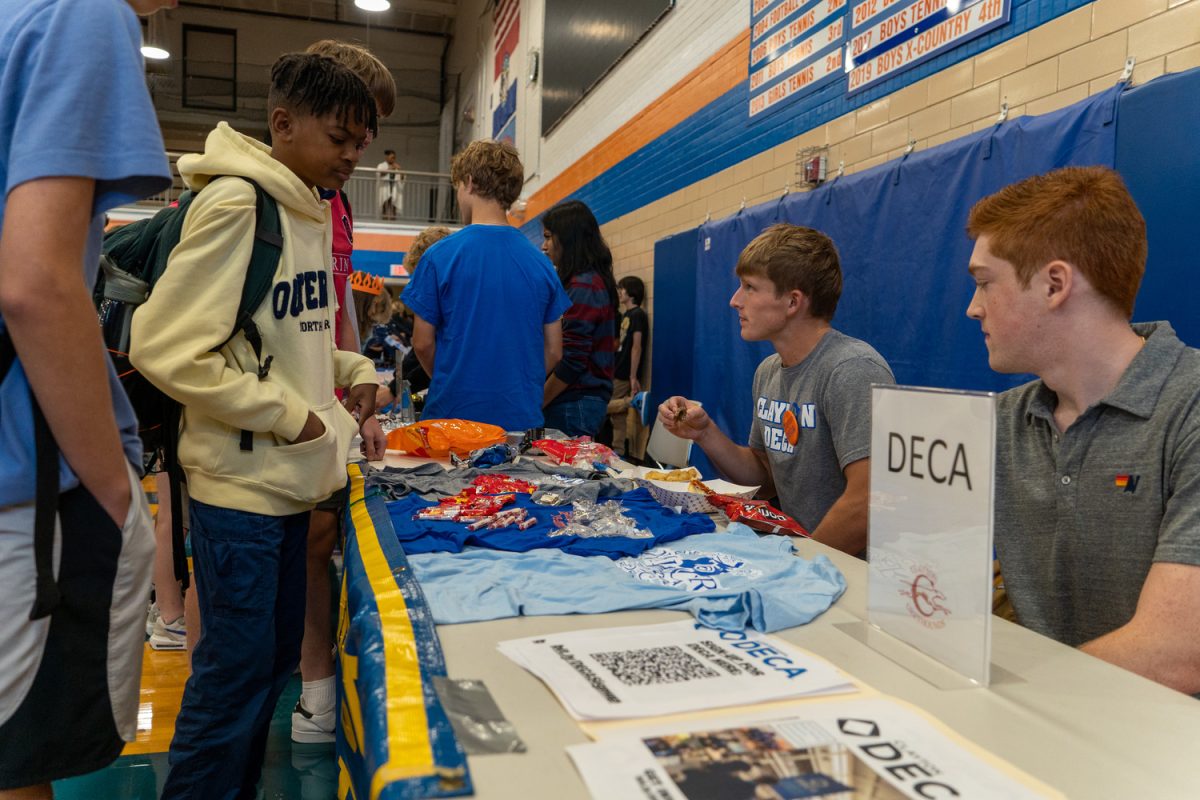In the words of Sonia Beard, Cookie Chair and co-leader of the Clayton Girl Scout Troop: “The only reason people don’t buy Girl Scout cookies is because they weren’t asked.â€
Each year, thousands of girls young and old venture out door-to-door or to their stations outside of Walmart, armed with an order form and a winning smile. Their success is undeniable.
If you’re looking for proof of this success, just turn your attention to the $700 million dollars in cookie sales that were made last year alone.
Clearly, plenty of people are asked whether they want to buy Girl Scout Cookies. CHS Junior Carly Beard once heard of a Girl Scout selling 2,000 boxes of cookies in one year.
According to troop leader Lisa Avery, the revenue raised from cookie sales support troops, numerous camps and programs, scholarships and charities.
The whole business of selling these delicious cookies began in 1917 with an Oklahoma troop selling cookies in their school cafeteria in order to raise money.
Cookie sales did not begin on a wide-scale basis until 1922 when “The American Girl Magazine” featured an article by Chicago Girl Scout leader Florence E. Neil detailing a sugar cookie recipe for Girl Scouts and their mothers to follow.
Throughout the 20’s and 30’s these cookies were packaged in wax paper bags, sealed with a sticker and then sold door to door for about 30 cents per dozen. In 1936, the Girl Scout organization made the decision to hire their own commercial baker to mass-produce cookies that could be sold by Girl Scouts nation-wide. “The cookies sold for 25-35 cents a dozen.†Troop-leader Lisa Avery said.
By 1951, the line included three varieties of cookies: Shortbread, Peanut Butter Sandwiches, and Thin Mints.
Today, Thin Mints account for a quarter of the 200 million boxes of Girl Scout cookies sold annually. According to Beard, last year “Thin Mints outsold Oreos.â€
Two bakers are currently licensed to produce eight different varieties of cookies, three of which are the originals from 1951.
However, these cookies have encountered their fair share of troubles over the years. During WWII in the 1940’s, cookie production was halted due to sugar, butter and flour shortages. Girl Scouts switched to selling calendars during the War.
More recently in January of 2012, the cookies were involved in a controversial boycott by a teen from California wishing to protest the admittance of a 7-year-old transgender child into a Colorado-based troop.
In a video posted on YouTube, the teen, who claimed to have been a Girl Scout herself for eight years, stated that “Girl Scouts describes itself as an all-girl experience. With that label, families trust that the girls will be in an environment that is not only nurturing and sensitive to girls’ needs, but also safe for girls.”
The Girl Scouts of Colorado released a statement through the Gay and Lesbian Alliance Against Defamation (GLAAD), saying “If a child identifies as a girl and the child’s family presents her as a girl, Girl Scouts of Colorado welcomes her as a Girl Scout.â€
Given the strong push-back from the LGBT community and the immense popularity of Girl Scout Cookies, it is unlikely that the boycott made much of a dent in cookie sales.
Girl Scout cookies have even merited their own flavors of lip balm (Samoa, Thin Mint and Tagalong flavors). If that doesn’t spell success, then I don’t know what does.
From the printed newspaper to the black-and-white TV, many things in American society have come and gone over time. However, it would appear that these delicious cookies are here to stay.
______________________________________________________
This website has a great graphic to use for the page design of the story:
http://www.foodiggity.com/?s=girl+scout
Include the original recipe!!!!!!!
Girl Scout Cookie, circa 1922
- 1 cup butter
- 1 cup sugar plus additional amount
- for topping (optional)
- 2 eggs
- 2 tablespoons milk
- 1 teaspoon vanilla
- 2 cups flour
- 1 teaspoon salt
- 2 teaspoons baking powder
Cream butter and the cup of sugar; add well-beaten eggs, then milk, vanilla, flour, salt, and baking powder. Refrigerate for at least 1 hour. Roll dough, cut into trefoil shapes, and sprinkle sugar on top, if desired.
Bake in a quick oven (375°) for approximately 8 to 10 minutes or until the edges begin to brown. Makes six- to seven-dozen cookies.






